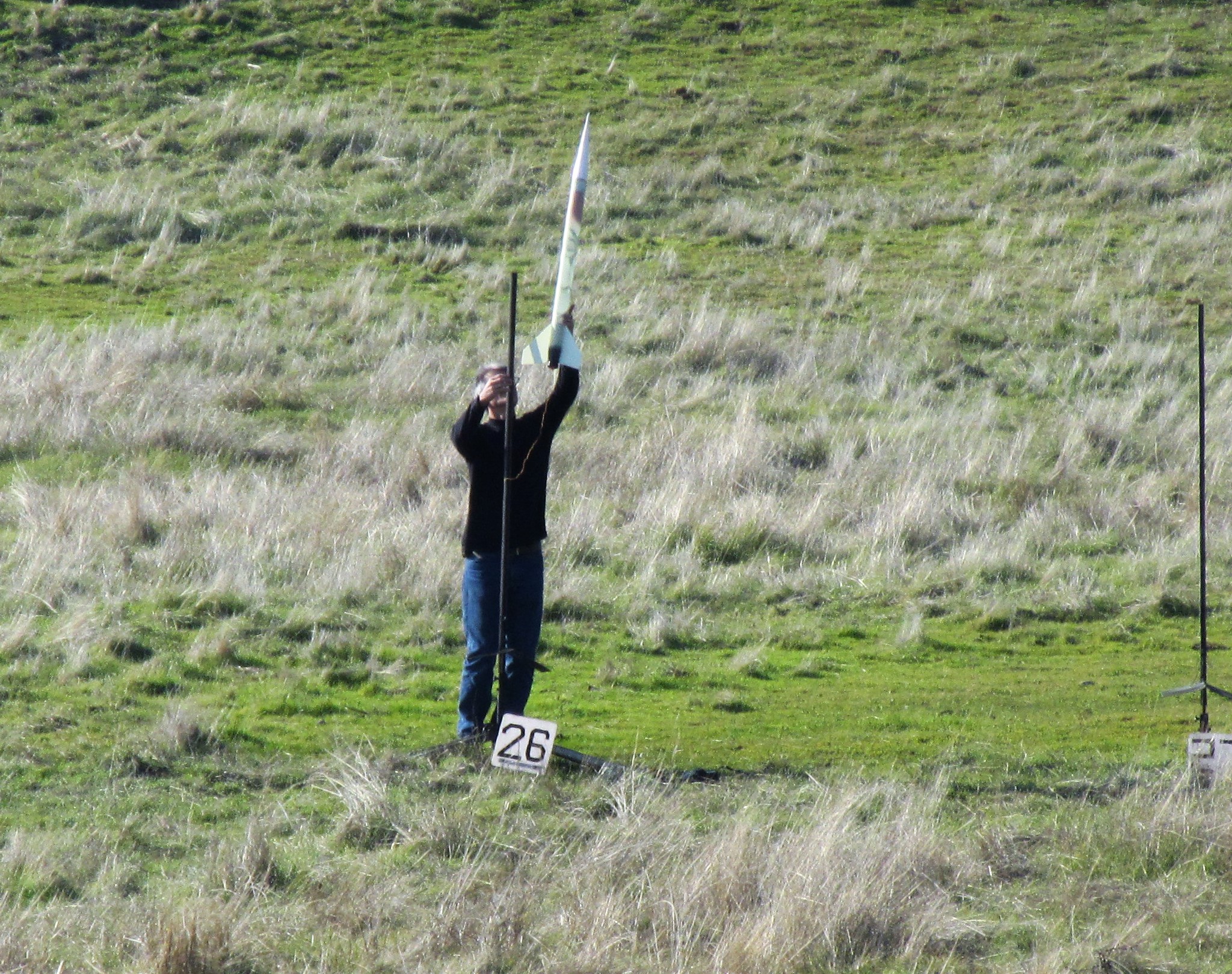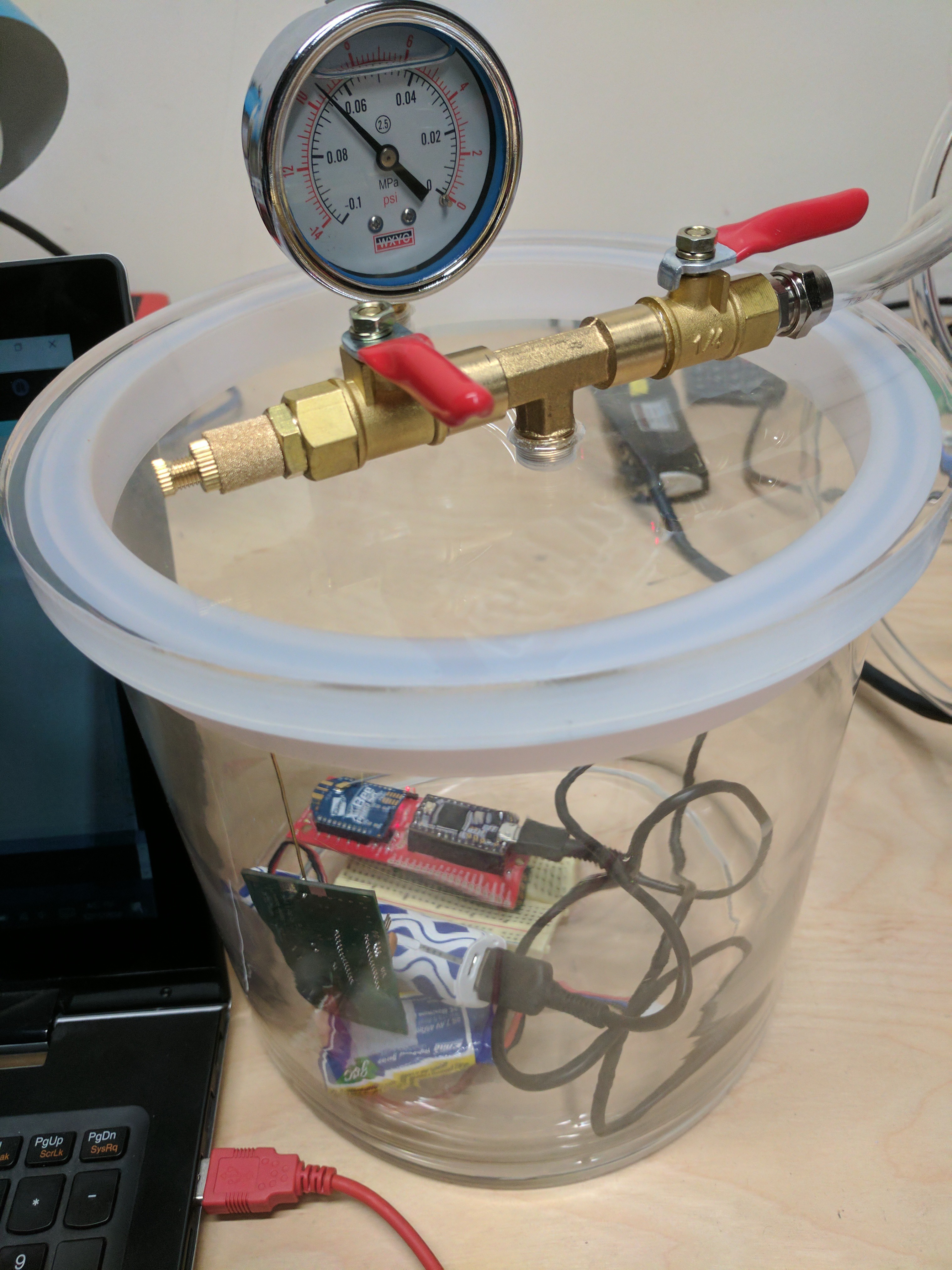One of the main goals of this 9dof tilt sensor rocket altimeter, was to see if tilt sensing could be used as apogee verification for future chute deployment circuits. Looking back at the data from the successful flight, I was curious to see how closely the altimeter apogee data lined up with the 9dof tilting apogee. Tilting apogee occurred within 2.5 feet elevation in comparison to the altimeter data. It was also within about 0.3 seconds. It looks as if the tilt measurement will be a very good secondary check to confirm reaching apogee, but more test data is needed.
Lunar.org had another rocket launch in December. I attended, with the goal of getting my model rocket high power certification level 1, and also getting more flight data. I did certify on a conservative H238 rocket motor installed in a Mad Cow fiberglass 2.6" Black Brant II rocket to an estimated 1700 feet. So I am now allowed to fly and buy H and I motors.

I had issues getting my altimeter to communicate prior to any of my flights. (I have since gotten them to communicate,and it looks like it was due to me not using the correct version of arduino code, and processing code). I then put my Altus EasyMini altimeter in my Aerotech rocket. The electronics karma was not not with me that day, and the 2700 ish foot flight showed up as a mere 431 foot high flight, with some very strange acceleration graphs. I believe I may have had a loose connection on the battery circuit, and it rebooted mid flight.

UPS delivered my new vacuum test chamber today, and I got a chance to vacuum it down in excess of 30,000 feet. I used an Eggfinder TRS altimeter for a quick comparison of the altimeters. Interestingly enough, the Eggtimer TRS did not seem to like being that high and proceeded to display negative altitude. I then brought the pressure down to 25,000 feet and they differed by 130 feet at that altitude. I compared a few more readings as I let some air return back into the chamber. In a quick comparison, the readings looked similar further down in "altitude". I have also performed a similar test with with the XBee vs the Altus EasyMini, and the results are similar. This test chamber will be used to verify chute deployment circuits proper function as they are added to the programming. That way they can be tested extensively, prior to putting the unit into the rocket.
I have gotten to play with the Eggtimer TRS altimeter with LCD and bluetooth module, and the compatible RocketFinder phone application for a while now. Although this combo has very slow data transfers compared to xBee, the functions it does have are very nice. While I had originally thought that laptop operation would be optimal .... I have since changed my mind, and now think that a cell phone rocket interface would be closer to ideal. A couple things that brought me to this conclusion (besides just playing with the Eggtimer TRS) was 1. My computer screen is almost unreadable in sunlight. A cell phone is better built to handle that. 2. I saw my friend pick up his laptop and walk over half a mile to retrieve his rocket, using his tracking software. Although it worked perfectly for him, a cell phone is so much more portable. So I am going to pursue programming an interface, so that a connected xBee, or a xbee connected to a bluetooth module, can be used to view rocket position. I would not try to reinvent the wheel, but I want to add functions like arming and setting main chute altitude to the functions that RocketFinder has.
Been trying out the new Arduino 1.6.13 version, with the new Teensy version 1.34 beta 1. The new Teensy version has options for code optimization now. While some appear to be compatible with my firmware, the new LTO options do not seem to work. With optimization set to "fastest" everything seemed to work, but will test some more.
 Walter Dunckel
Walter Dunckel
Discussions
Become a Hackaday.io Member
Create an account to leave a comment. Already have an account? Log In.